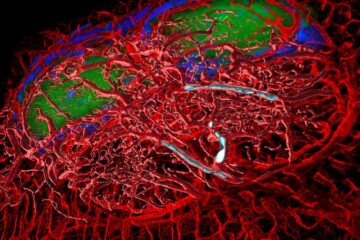Scientists head to warming Alaska on ice core expedition

In an effort to better understand how the Pacific Northwest fits into the larger climate-change picture, scientists from the University of New Hampshire and University of Maine are heading to Denali National Park on the second leg of a multi-year mission to recover ice cores from glaciers in the Alaska wilderness.
Cameron Wake of the UNH Institute for the Study of Earth, Oceans, and Space (EOS) and Karl Kreutz of the University of Maine Climate Change Institute are leading the expedition, which is funded by the National Science Foundation.
This year’s month-long reconnaissance mission will identify specific drill sites for surface-to-bedrock ice cores that will provide researchers with the best climate records going back some 2,000 years. The fieldwork is part of a decade-long goal to gather climate records from ice cores from around the entire Arctic region.
“Just as any one meteorological station can’t tell you about regional or hemispheric climate change, a series of ice cores is needed to understand the regional climate variability in the Arctic,” says Wake, research associate professor at UNH. “This effort is part of a broader strategy that will give us a fuller picture.”
Kreutz says the 2,000-year ice core record will provide a good window for determining how the climate system has been affected by volcanic activity, the variability of solar energy, changes in greenhouse gas concentrations and the dust and aerosols in the atmosphere that affect how much sunlight reaches the Earth.
“This is a joint effort in the truest sense,” says Kreutz, who has collaborated with Wake in both Arctic and Asian research for the better part of a decade. Kreutz’s UMaine team will consist of Erich Osterberg, who received his Ph.D. in December, second-year M.S. candidate Ben Gross, and Seth Campbell, an undergraduate majoring in Earth science.
Wake conducted an initial aerial survey of the Denali terrain two years ago but notes there have been “no boots on the ground.” Through May, Wake, his Ph.D. student Eric Kelsey, the UMaine team, and Canadian ice-core driller Mike Waszkiewicz will visit potential deep drilling sites and use a portable, ground-penetrating radar to determine the ice thickness and internal structure on specific glaciers. They will be looking for “layer-cake” ice with clear, well-defined annual stratigraphy.
A clear record from Denali will help round out the bigger paleoclimate picture by adding critical information gathered from ice cores recovered in the North Pacific, all of which can be compared to a wealth of climate data already gathered in the North Atlantic region.
According to Wake, scientists have long thought the North Atlantic drives global climate changes. However, there are now indications that a change in the North Pacific might happen first and be followed by a North Atlantic response. “We need to better understand the relationship in terms of the timing and magnitude of climate change between these two regions,” he says.
At the potential drill sites, the scientists will also collect samples for chemical analysis from 20-foot-deep snowpits and shallow ice cores, and install automatic weather stations at 7,800 feet and 14,000 feet. The chemical analyses, which will be carried out at both UNH and UMaine labs, are needed to decipher changes in temperature, atmospheric circulation, and environmental change such as the phenomenon known as “Arctic haze,” which has brought heavily polluted air masses to the region for decades from North America, Europe, and Asia.
Media Contact
All latest news from the category: Earth Sciences
Earth Sciences (also referred to as Geosciences), which deals with basic issues surrounding our planet, plays a vital role in the area of energy and raw materials supply.
Earth Sciences comprises subjects such as geology, geography, geological informatics, paleontology, mineralogy, petrography, crystallography, geophysics, geodesy, glaciology, cartography, photogrammetry, meteorology and seismology, early-warning systems, earthquake research and polar research.
Newest articles

Zap Energy achieves 37-million-degree temperatures in a compact device
New publication reports record electron temperatures for a small-scale, sheared-flow-stabilized Z-pinch fusion device. In the nine decades since humans first produced fusion reactions, only a few fusion technologies have demonstrated…

Innovative microscopy demystifies metabolism of Alzheimer’s
Researchers at UC San Diego have deployed state-of-the art imaging techniques to discover the metabolism driving Alzheimer’s disease; results suggest new treatment strategies. Alzheimer’s disease causes significant problems with memory,…

A cause of immunodeficiency identified
After stroke and heart attack: Every year, between 250,000 and 300,000 people in Germany suffer from a stroke or heart attack. These patients suffer immune disturbances and are very frequently…





















